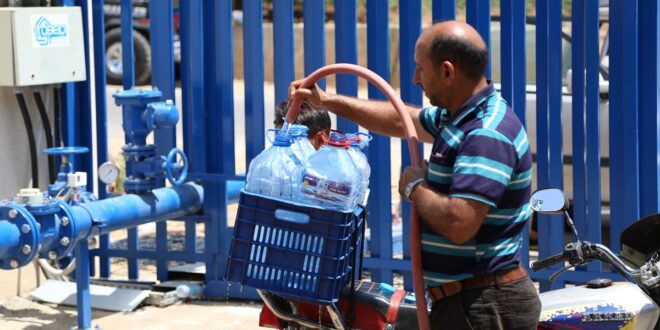Using New Technologies to Solve the Water Crisis
The United Nations Conference on Trade and Development (UNCTAD) has recently released a report which emphasizes the significant role of science, technology, and innovation in tackling the global water and sanitation crisis. The report cites that about two billion people lack safe drinking water, while 5.4 billion people do not have access to efficiently managed sanitation services worldwide. Frontier technologies such as artificial intelligence, big data, and the Internet of Things can help monitor water and sanitation infrastructure and accelerate progress towards Sustainable Development Goal (SDG) 6 on clean water and sanitation for all.
To expand the use of these technologies, the UN’s Commission on Science and Technology for Development (CSTD) will examine how science, technology, and innovation can serve the billions of people who lack access to these essential services effectively. The CSTD will hold its twenty-sixth annual session from 27 to 31 March, focusing on the role of STI in tackling global challenges like the water crisis.
“Access to safe water and sanitation is a challenge in developing countries,” says Shamika N. Sirimanne, UNCTAD’s director for technology and logistics and head of the CSTD Secretariat. “Climate change and increased pressure on water, food and energy resources are aggravating the situation.” The session will serve as a focal point in the UN system for knowledge-sharing, consensus building, and securing synergies between UN-wide initiatives to leverage science, technology, and innovation for development, including SDG 6.
New technologies hold great promise
The demand for freshwater is projected to exceed supply by 40% by 2030, putting at risk the achievement of SDG 6, and threating all SDGs, including those on food security, poverty, gender equality, and peace. To tackle water scarcity due to excess demand and climate change, a significant improvement in how we manage water resources is essential.
“New technologies can be deployed in water infrastructure management,” says Sucharit Koontanakulvong, a distinguished scholar in water resources management at Chulalangkorn University in Thailand. For example, early warning systems that rely on drone technologies or deeply integrated earth observation systems can support disaster threat prediction and mitigation, while solutions like smart metering, which provide real-time information and customized feedback, can increase the efficiency of existing water and sanitation systems.
Other experts agree that such technologies should be scaled up to accelerate progress towards SDG 6. “A combination of open digital tools, capacity-building, and the use of international standards and frameworks are fundamental to scaling up efforts towards SDG 6,” says Enrique Cabrera, a professor at the Polytechnic University of Valencia in Spain and the vice president of the International Water Association. He also highlights that water solutions must be adapted to local conditions, as one size does not fit all. “Ad-hoc solutions will be needed for each local situation to determine the best use of the latest technologies and how to optimize the use of existing financial resources,” Cabrera added.
Global partnerships critical
Global partnerships are crucial, not only to support access to STI but also to enhance knowledge-sharing that fosters scaling up good practices domestically and internationally. Doulaye Kone, deputy director of the water, sanitation, and hygiene programme at the Bill and Melinda Gates Foundation, highlights the importance of cooperation among various stakeholders in fast-tracking progress towards SDG 6.
“Over the last decade, new players, inventors and innovators have joined the challenge of solving the sanitation crisis,” says Mr. Kone. He added that stakeholders from industry, academia, and governments in China, India, Senegal, and South Africa are pioneering transformative solutions to make sanitation services inclusive and safe for all, especially women and girls. “By setting clear policies, performance standards for innovative technologies and sanitation service delivery, countries can drive the adoption of innovation and collaboration needed to accelerate progress towards SDG 6,” Kone explains.
The water and sanitation crisis is a significant global problem that needs to be addressed through the use of new technologies and innovative solutions. The role of science, technology, and innovation in solving this crisis must be emphasized, and global partnerships must be established to ensure that everyone has safe access to drinking water and sanitation services. Through cooperation and the use of new technologies, we can achieve SDG 6 and promote a better future for all.
 Mind Uncharted Explore. Discover. Learn.
Mind Uncharted Explore. Discover. Learn.




